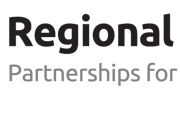State of the Nation – designing an innovative instrument for supporting public policies

This case study is not a success story in PHE per se. Instead, it describes the implementation of an online tool which can help PHE providers to align to national, regional and local development strategies and priorities. The tool, called “The State of the Nation data aggregator” is implemented though the EU-funded project “State of the Nation – designing an innovative instrument for supporting public policies“. More specifically, the project aims to create an aggregator of multidisciplinary statistical data (since 1990 until now), which can be used to produce strategic documents and support decision-making processes. Despite various organizations collecting disparate and unsynchronised data from various fields, at this moment in Romania the central administration does not have access to a database integrating all public data which would be relevant for supporting public decisions. The beneficiary is the General Secretariat of the Romanian Government (SGG)/ Center for Analysis and Strategy, in partnership with the National University for Political Studies and Public Administration, Bucharest, Romania.
The project, currently under implementation, will facilitate the identification of areas where public administration officials could collaborate with the academia and the establishment of strategic partners and networks for information and best practices exchange, and will establish a structure coordinated by the Prime Minister, with tasks in monitoring and appraising the performance in public services through its main objective, developing a multi-dimensional system of indicators which will allow an accurate radiography of Romania’s situation and its regions, and the evaluation of public perception.
During the first year of implementation, the project developed a Methodological design and the Design of the socio-economic indicators system to provide a dashboard of Romania’s level of development. The system covers twelve main domains, each with 10-12 main indicators, as well as secondary indicators. The domains are: Demography, labor market and quality of life, Education and culture, Energy and
natural resources, Economic development and infrastructure, Agriculture, food and food security, Governance and social capital, Environment and sustainable development, Health, Research, technology,innovation, Finances and financial capital, National security, and European and global development context.
In its final stage, the project will use the research data gathered to elaborate a public policy project for supporting decision-making processes in central administration.
PHE institutions can use the online tool (the data aggregator), as well as the public policy project, to ground their educational policies, mission, vision, and curricula in factual data on Romania’s progress and priorities for development. In order for the PHE sector to serve through its educational offer, the actors in the field must first become acquainted with the priorities for development (local, regional and national). Once finalized, the aggregator will become one of the main instruments for supporting decisions and evidence-based policies used by governmental actors for designing and evaluating public policies in Romania. For PHE institutions, the aggregator will be a valuable statistical data provider, as well as a tool for benchmarking.
Furthermore, one of the domains within the system of relevant indicators for measuring Romania’s level of development is Education. The state of the education system is of greatest concern for all stakeholders, and especially providers of PHE. They will be able to consult relevant data regarding: the financing of education, human resources and their financial earnings, participation in education, the internal efficiency and results of education (i.e. early leavers from education and training, tertiary educational attainment), and lifelong learning, mobility and integration on the labor market.





